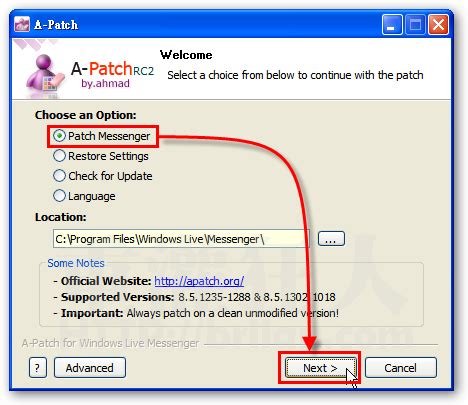Patching MSN 1.0: A Quick and Easy Process (A Retro Tech Deep Dive)
MSN 1.0, released in 1995, holds a special place in internet history. While seemingly ancient by today's standards, for many, it represents a foundational moment in the evolution of online communication and the early days of the World Wide Web. However, like any early software, MSN 1.0 had its share of bugs and vulnerabilities. While finding official patches for such an old program is nearly impossible, understanding the concept of patching and how it applied to MSN 1.0 offers a fascinating glimpse into the past. This article will explore the process, highlighting the challenges and the significance of software updates in the early days of the internet.
What was Patching in the MSN 1.0 Era?
Patching in the context of MSN 1.0 involved addressing specific problems within the software. These problems could range from minor glitches affecting the user interface to more significant security vulnerabilities that could compromise user data. Unlike today's automatic updates, patching in the mid-1990s was a manual process. Patches, often small files containing code modifications, were typically downloaded separately and then manually applied to the installed MSN 1.0 program. This often involved running a specific installer or replacing individual files within the program's directory.
Where Could You Find MSN 1.0 Patches? (The Challenges)
This is where things get tricky. Microsoft no longer supports MSN 1.0, meaning official patch sources are long gone. Finding any remnants of these patches would require extensive searching through archived websites, forums dedicated to retro computing, or potentially contacting individuals who were heavily involved in the early days of MSN. The chances of locating functional MSN 1.0 patches are extremely slim.
How Did Patches Work? (A Conceptual Overview)
Even without access to the actual patches, we can still understand the fundamental principle. Imagine a part of the MSN 1.0 code that caused a specific error, such as a crash when sending a message. A patch would contain a corrected version of that code segment. By applying the patch, users would effectively overwrite the problematic code with the fixed code, resolving the issue. This process required a precise understanding of the software's architecture and a meticulous approach to avoid further damage.
What Were Common Problems Requiring Patches?
While detailed patch logs for MSN 1.0 are unavailable, we can speculate on common issues that likely required patching:
- Bug Fixes: Minor graphical glitches, incorrect display of information, or unexpected program behavior.
- Security Vulnerabilities: Early internet security was rudimentary. Patches likely addressed vulnerabilities that could have allowed unauthorized access to user data or system resources.
- Compatibility Issues: Problems arising from interaction with other software or hardware.
Why is Understanding Patching Important, Even Today?
Understanding the historical context of software patching, even for outdated programs like MSN 1.0, provides valuable insight into the evolution of software development and security. It highlights the importance of regular updates, emphasizing how software is a constantly evolving entity requiring ongoing maintenance and improvements. This understanding is vital even today, as we rely on automatic updates and robust security measures that have evolved from those early, manual patching days.
Conclusion: A Legacy of Innovation
While directly patching MSN 1.0 is practically impossible today, exploring the concept of patching in that era provides a fascinating journey into the early days of the internet and software development. It underscores the importance of software maintenance, security, and the continuous evolution that has shaped our digital world. The challenges faced then paved the way for the streamlined and automatic update systems we enjoy today. The legacy of MSN 1.0, even in its imperfect form, continues to resonate in the digital landscape we navigate every day.

